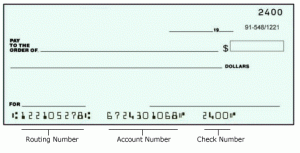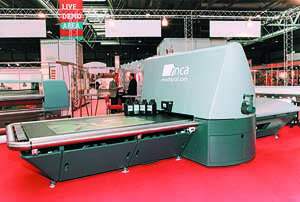Declining is not the same thing as doomed (Deluxe Corp)
Investors nowadays have an unhealthy obsession with growth (and by nowadays, I mean since about 1870). I, for my part, have no objection to growth, but as I have stated, I don’t like overpaying for growth, which usually simplifies to “I don’t like paying for growth.”
But if growth is king, and people are willing to pay daft multiples for it, and even invent a mode of analysis called “real options” in order to justify even higher multiples (the real options concept is interesting in theory, but attempts to quantify it break down because unlike actual options, real options do not have the rigor imposed by the arbitrage elimination requirement), then a company that has anti-growth is a sort of pathetic phantom of Wall Street, doomed to wander in darkness eternally. But, as Ben Graham said of junk bonds, they exist in large quantities and someone has to own them. And sometimes, that someone should be us.
 Deluxe Corporation (DLX) has been in operation for a number of years as a check printer, and checks still constitute over 60% of their income. In addition to generic checks, they also produce, either directly or through banks, checks with licensed characters or associated with causes, such as Disney, Garfield, or the National Arbor Day Foundation. They also sell checks directly to consumers as well as through financial institutions.
Deluxe Corporation (DLX) has been in operation for a number of years as a check printer, and checks still constitute over 60% of their income. In addition to generic checks, they also produce, either directly or through banks, checks with licensed characters or associated with causes, such as Disney, Garfield, or the National Arbor Day Foundation. They also sell checks directly to consumers as well as through financial institutions.
Since electronic payments have been increasing in popularity, and and the lowered pace of economic activity recently has led to fewer transactions in general, their main line of business has been declining by several percentage points annually, and their total revenues have fallen from $1.59 billion in 2007 to $1.34 billion in 2009, although curiously their profit margins have gone up a bit thanks to aggressive cost cutting and control. Furthermore, the bankruptcy and consolidation of financial institutions due to the recent banking crisis have had a tendency to cost them clients, force them into a tricky negotiating position when a bank that is one of their clients merges with a bank that isn’t, and also forced them to be more flexible in pricing when their contracts are up for renewal, since in banking nowadays every penny must count.
The firm also prints a number of customized forms for businesses, which they claim are often designed against the type of accounting and other records software commonly used by small business, as well as other printed items such as business cards and promotional materials. But with fewer businesses comes fewer forms, and of course form designing software is not so difficult to find these days, so that line is also under pressure. The firm is attempting to expand the range of business services it offers, such as web hosting, logo design, payroll management, and so on, primarily by making small opportunistic acquisitions. For financial institutions they also offer fraud protection and some record keeping and consulting services.
It is laudable that they are trying to become a one-stop shop for small business services (generally speaking, businesses have had bad results diversifying for its own sake (that can be left to stockholders themselves on a portfolio level), but if it is done pursuant to a sensible marketing plan it is at least defensible), but I do not believe at this time that the sectors they are expanding into offer them a great deal of potential for product differentiation. Their CEO was formerly the VP of “retail solutions” at NCR, which may explain the interest in product line expansion–not that I find that trying to get into the CEO’s head to be a fruitful exercise from a value added perspective.
So, that’s the bad news, and as you can see it’s pretty bad. But the next question becomes whether this bad news is priced into the company, and I’m going to say that it largely is. Even if a company is in terminal decline, it may be able to remain profitable and spit out a lot of cash along the way, as, for example, Qwest and Windstream have despite the decline in use of of land lines in the United States. The firm has a market cap of $1.03 billion, and last year produced GAAP earnings of about $99 million.
However, this figure needs to be adjusted, both up and down, for nonrecurring events. It should be noted that cost of goods sold plus selling, general, and administrative expense, has declined from a total of $1.318 billion in 2007 to $1.117 billion in 2009, and the CEO claims he still has $65 million in costs to cut, although of course, like all costs, these are no doubt linked to revenue-generating activities and cannot be regarded as free money. But at any rate, 2009’s earnings are hampered by $32 million in restructuring charges and asset impairment charges, which are noncash and/or nonrecurring, but which are offset by a $10 million gain on early debt extinguishment, so their real earnings are a bit higher at $121 million. Their real P/E ratio is thus about 8.5. If a 10% return is standard, this suggests that the market is pricing in a terminal decline in earnings of about 1.7%, which is not quite the 4-6% decline in check volume the firm has seen historically since around the 90s but it does show us the theoretical size of the gap that Deluxe has to fill, and the gap appears to me to be manageably small.
 I believe that checks will always be in use by some people, as some people do like tangible records of transactions and not everyone likes either sending or receiving electronic routing information for single transactions, and there is substantial infrastructure built up around them as well as the tendency towards “stickiness” in payment methodologies, so it seems to me that the 4-6% decline may at some point level off. Also, it should be noted that Deluxe is hardly the only check printer exposed to this problem, so there may be opportunities for consolidation among check companies in future, and really I would like to see the CEO focus on that more than, or at least as well as, expanding their product offerings.
I believe that checks will always be in use by some people, as some people do like tangible records of transactions and not everyone likes either sending or receiving electronic routing information for single transactions, and there is substantial infrastructure built up around them as well as the tendency towards “stickiness” in payment methodologies, so it seems to me that the 4-6% decline may at some point level off. Also, it should be noted that Deluxe is hardly the only check printer exposed to this problem, so there may be opportunities for consolidation among check companies in future, and really I would like to see the CEO focus on that more than, or at least as well as, expanding their product offerings.
The wise value investor, however, does not console himself with rosy projections of the future, so these considerations may produce a bonus down the road but they should definitely not be relied on. But it appears that the firm has produced a reasonable profit margin despite a recession, and it has the free cash flow to pay down debt early. Furthermore, the first quarter of 2010 is promising, actually $5 or 6 million, or about 20% higher, than the first quarter of 2009 on my estimate of a comparable basis, and which translates to full year earnings of about $1.3 million, which produces a P/E ratio of 7.7. The firm and its analysts both expect the fall in revenues to arrest itself by 2011, but of course, they are paid to be optimistic. Depreciation and amortization of intangibles have exceeded capital expenditures, but on the other hand the company’s strategy does seem to involve future acquisitions so this should not be looked on as a source of free cash flow.
The firm’s balance sheet is not particularly robust, loaded as it is with goodwill and intangibles, but on the other hand it is not unusual for a balance sheet to look a little empty when capital expenditures are depreciated and not replaced, or for an acquisitive firm to carry a lot of goodwill. Non-replaced depreciation is the source of a lot of declining companies’ ability to spin off excess cash flow, and Deluxe has closed down 9 facilities since its cost cutting began. The firm’s interest requirements were covered five times in 2009, and fully 6.5 times in the first quarter of 2010, so it does not appear that the decline in business is likely to produce financial distress at this time, and it is the specter of financial distress that often causes the low valuations of declining companies to turn out to be perfectly accurate. The firm pays a 5.1% dividend which I believe to be more than adequately covered.
In sum, at current prices I believe that the investor in Deluxe Corporation is getting at least what he or she paid for, and the possibility of Deluxe arresting the decline at some future point would make this a reasoanbly attractive opportunity at this price and even more attractive should the price decline further.
Leave a Reply